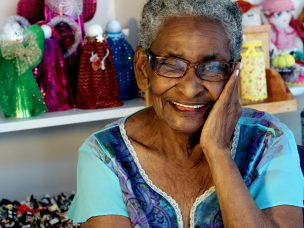Contributions
Impact of COVID-19 on Patients With Hodgkin Lymphoma
The implementation of treatment regimens for Hodgkin lymphoma (HL) in the face of COVID-19 is often individualized. Treatments for HL can result in an increased risk of infections and complications due to the immunosuppressive effects of therapy. In addition, standard treatments for HL, including bleomycin and radiation therapy, can increase the risk of pulmonary toxicity....
Immune Pathways May Influence Atopic Dermatitis in Blacks
Racial differences have been observed in the prevalence and presentation of atopic dermatitis in African American and European American patients. African Americans tend to present with extensive papular lesions and widespread extensor surface involvement, as well as lichenification secondary to treatment resistance. Few studies have been conducted on the immune signatures that may drive disease,...
Managing Atopic Dermatitis in People of Color
Atopic dermatitis is a common skin condition that severely and negatively affects the quality of life of children and their parents. However, children of Black and Hispanic parents tend to experience persistent and poorly controlled symptoms of atopic dermatitis, which can increase the burden on the quality of life of families of color. In addition,...
How Barriers to Care Affect Atopic Dermatitis
Barriers to health care for atopic dermatitis (eczema) and asthma may differ among racial/ethnic minority groups. However, research is limited on the perceptions of these groups regarding access to care. Racial/ethnic minority groups may experience a greater treatment burden and more barriers to appropriate care than other groups. Researchers conducted an online survey across the...
How Racism Impacts Asthma and Atopic Dermatitis
Structural racism involves the policies and practices that have been put in place over time through government and institutions. The physical and social environments where people of African, Latinx, and Indigenous heritage live reflect grave inequities that can influence the risk of developing allergic diseases, including asthma and atopic dermatitis. Physiologic stress responses caused by...
Addressing Racial/Ethnic Disparities in Atopic Dermatitis
While innate differences between racial/ethnic minority groups and white people with atopic dermatitis may explain certain measures of severity and prevalence, factors concerning racism cannot be ignored. For example, atopic dermatitis disparities occur in Black people, despite genetic risk factors being more prevalent in white people. Although genetic risk factors may be researched more heavily...
Gender Differences in Non-Hereditary ATTR-CM
Wild-type transthyretin amyloidosis (ATTRwt) is a non-hereditary form of transthyretin amyloid cardiomyopathy (ATTR-CM) that commonly leads to peripheral neuropathy and carpal tunnel syndrome. The symptoms of ATTRwt usually do not appear until after 60 in men and women. However, what makes ATTRwt particularly dangerous is that it can remain undiagnosed, especially in women. Few studies...
Are Women Underdiagnosed With ATTR-CM?
The prevalence of transthyretin amyloid cardiomyopathy (ATTR-CM) is reportedly lower in women than men. As a life-threatening heart condition, ATTR-CM can often lead to heart failure and other complications, including death. However, sex-related differences have not been assessed in detail. This systematic review, published in Heart Failure Reviews, sought to determine whether there are differences in...
Patients With NMOSD at Risk of Poor COVID-19 Outcomes
Patients with neuromyelitis optica spectrum disorder (NMOSD) may be prone to experiencing worse COVID-19 outcomes. As an autoimmune disease, NMOSD is detrimental to the optic nerve and central nervous system. Patients with NMOSD may experience disease onset at a later age, have comorbidities, and often be treated with immunosuppressive therapy, such as rituximab, azathioprine, mycophenolate...








